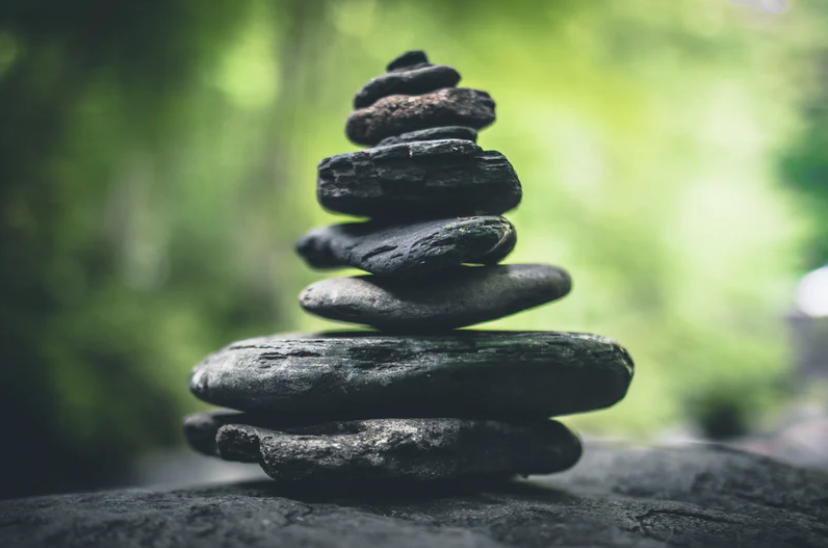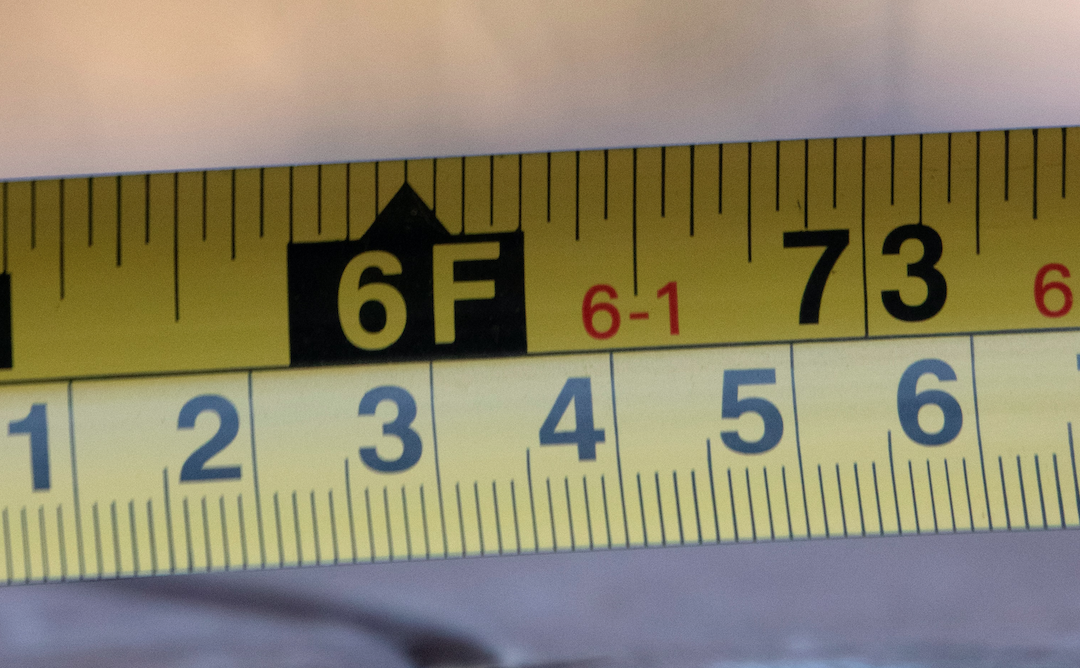
by Mike | Jan 5, 2021 | Gratitude
Happy New Year! Wow…we made it to 2021! What a year we just endured. I’m grateful just to turn the calendar to January! And with the flip of that page comes the all-too-daunting thought of a new year’s “resolution”!!!
Have you ever told yourself that “This is the year! This is the year I’m going to set a resolution and stick to it!!! This IS the year!!!”. I suspect we’ve all said it once or twice this time of year – always with the best of intentions and a desire to make positive changes in our lives. Yet, what typically happens? If you’re like most people, the positive intentions quickly fade away and you’re left with the thought “well, there’s always next year!” But what if there was a resolution that was free, easy, and had the potential to change your life in ways that may shock you?
You might be asking yourself, what is this magical resolution that can be such a game changer? It’s actually pretty simple…it’s the practice of gratitude. I know – you might be thinking, “Ok, great, I can say thank you to people that do nice things for me, but, how can practicing gratitude be so impactful?” Well, if you just look at science, we can see that a practice of gratitude can have a ton of benefits. Practicing gratitude can:
- make us more optimistic
- improve our physical health
- help us sleep better
- improve our friendships
- make us happier
These are just a few of the things that cultivating a grateful mindset might do for you, so who wouldn’t sign up for all of those amazing benefits? But, with all resolutions, being successful in making positive changes in our life takes work – whether that’s dragging your tired body out of bed in the early morning to head into the gym or preparing the week’s worth of healthy meals to keep you focused on healthy eating. It’s no different for gratitude. Initially it takes real, intentional “work” to develop a habitual practice of gratitude. So, how can you practice it? Well, here are a few fun activities that can help you start building a practice of gratitude that can, in turn, lead you to a happier and healthier life in 2021.
- Take a few minutes each morning or evening to write down 3 things for which you are grateful. Placing priority on this list will open your mind over the course of the day to help you recognize and notice those things which bring you joy.
- Write anonymous notes of thanks to those who have positively impacted your life. There are undoubtedly many who come to mind. Drop the note in their mailbox and know that it will bring a smile to their face and joy to their heart. Also, since it’s anonymous, it will cause them start wondering who it is that thinks they are so awesome.
- Start a “gratitude jar” at home. Drop notes of gratitude for your family members in a jar and read them together at the end of the month and let the feelings of goodness and togetherness ensue.
- Send a “gratitude letter” to someone who has made a major difference in your life. Pick a person that you’ve never fully expressed the depth of your appreciation toward. The impact you might have on this person through your words could be profound.
- Donate your time or skills to a local charity. Strangers helping strangers – an awesome way to know you are making an incredible impact on those less fortunate.
So, over the course of 2021, look for ways to build a regular practice of gratitude. Have fun with it and as you begin to form a habit of gratitude, you’ll quickly see some really amazing positive changes in your life. Oh, and best of all, for this New Year’s resolution, you won’t have to drag yourself out of bed at 5:00am to get to the gym on those cold winter mornings.
Happy New Year everyone!

by Mike | Jan 3, 2021 | Gratitude, Inspiration
Problems. Three things are certain. We all have them. We all don’t want them. We all know that they often get in the way of living a joyful life. But, the reality is – problems are a normal part of life. A part of life that will always be with us. While our problems might bring new hardships to our life every day, consider this, what if…just what if, we chose to be grateful for the challenges our problems bring to us?
Grateful for our problems? What? Are you crazy? That’s simply ridiculous!!! You might be thinking “my problems are way bigger than yours” or “how could I ever be grateful for all of the chaos my problems bring to my life.” Thoughts like this are not unreasonable. In fact, they make perfect sense. Problems are bad. Gratitude is good. They just don’t seem to go together.
In our Facebook community called The Gratitude Spark (feel free to join by the way!), we were recently talking about the definition of gratitude. One of our amazing members from Australia made a great connection between problems we experience and gratitude for those problems.Imagine for a moment that you and your friends decide to write down all of the problems each of you are currently experiencing and you place them in a big pile in the middle of the table. As each of you start to pull out slips of paper that describe a problem someone close to you is experiencing, I suspect a few things would happen. First, you might feel shock, surprise or sadness about some of the things those close to you are going through. Second, I don’t think it would be too long before you would want to put all of those problems back and stick with the ones you wrote – your own problems – and you’d probably be grateful for the opportunity to do so.
That’s the thing with problems. We don’t often talk about them. We tend to keep them hidden. In fact, everyone you meet might be dealing with problems and fighting battles you really know nothing about. Mahatma Gandhi captured this perfectly when he said “I cried because I had no shoes, then I met a man who had no feet.” While your problem might be that you did a poor job on a work assignment, know that there is someone out there that actually has no job. While your problem might be that you aren’t feeling well enough to hang out with your friends, know that there is a child out there that is not feeling well enough to leave the hospital. While your problem might be that your home isn’t as nice as your neighbor’s home, know that there is someone out there that is homeless. It’s all about perspective.
Speaking of perspective, I got a whole bunch of it on a recent walk with my daughter. We were talking about what I was going to write for this article and she said “people always say that we should be grateful for what we have and part of what we have is our problems.” The wisdom and truth behind her words can’t be overstated. We have to own our problems – no matter how big or how small. Some of the slips of paper in that pile of problems on the table are ours. They might not be fun. They might be daunting. But, nonetheless, they are ours.
This leaves us with a choice. We can choose the lens through which we view our problems. We can choose to see our problems as challenges that keep us from a joy-filled life we deserve or, we can choose to see our problems as opportunities when viewed through the lens of gratitude. The beauty is that viewing our problems through this lens will allow us to see them as necessary for incredible personal growth. It will allow us to see our problems as opportunities to push ourselves to new heights. This lens will allow us to address our problems in ways that allow us to become stronger than ever through overcoming the hardships they may bring.
So yes, no doubt the problems in our life can cause chaos and challenges. But, if we take a moment to consider the lessons we can learn from them and the personal growth that can come from them, perhaps it’s not so crazy or ridiculous to be grateful for the problems we experience each day of our life.

by Mike | Oct 21, 2020 | Connection, Gratitude, Inspiration
Do you remember those “connect the dot” books you might have had when you were a kid? You know, the ones that had a page full of numbers placed at seemingly random positions on the page – just a big scattering of numbers. No pattern. No guide. Just a starting point. I sure remember them. I loved those pages in my “Highlights” magazine that I received every month.
Recently, a good friend of mine posed a pretty deep question about “life experiences” that caused me to start thinking about the journey we take through life. It led me to, of all places, those classic “connect the dots” pages that I loved as a kid. Why did I like them so much? Maybe it was the opportunity to create something that was very different in the end than it was at the start? Perhaps it was the unknown of what might result from all of the seemingly random twists and turns? At the time, I probably enjoyed them because I ended up with a pretty cool picture at the end. But now, as I reflect on those pages, I have a very different perspective. A perspective that is a little deeper. A perspective that led me to consider the connection between those “connect the dots” pages and our journey through life.
You might be thinking – a connect the dots page and one’s life journey? What’s the relation? Just consider, as you start a connect the dots page, you really only know two things, where to start and where to end. Between those two points, it just looks like a jumbled mess of numbers and dots with no rhyme or reason. Without connecting the dots, you really have no idea what you are creating. Even as you continue the process of connecting the dots, you still aren’t able to determine what this masterpiece will be. Until it hits you – there will be a point when you know exactly what it is that you are drawing. It is only then that you can sit back and start seeing what it is that you’re in the process of creating. I believe life is like that in a lot of ways. We don’t always know what our “picture” in life will be in the future. We take countless paths over the course of our life. We make decisions every day. We create connections with those we meet. Those are all dots in our life’s journey. But do they mean anything, these random dots along our life path?
Steve Jobs, the fearless leader of Apple summed it up perfectly in a speech where he was talking about three life lessons he’s learned. One of his life lessons focused on those seemingly random steps in our life, those dots. The steps we take…well, just because they are there in front of us. Those steps lead to a path whose destination we really know nothing about. Yet, we unknowingly keep following these dots.
Sadly, it seems that often we don’t understand how important those seemingly meaningless and random decisions and connections we make along the way can help us in understanding our life “picture”. In those moments, we really have no way of knowing where they are leading us. All we have is trust. Trust that those dots will connect in some way. So, I think we owe it to ourselves to be thankful for those opportunities, those decisions and those connections. While we might not know how they are cultivating a path for us, know that they are. They are happening for a reason. That random interaction with a stranger. The decision to decline a job offer. The person you meet at a party you didn’t want to go to who ends up changing your life.
Just as we have to step back from a connect the dots picture at some point to get a sense of what we are creating, so too do we need to pause and take a step back in our life in order to see the picture that all of those dots on our path have painted. It is only when we turn around to look at the path we traveled that clarity about our present comes. Perhaps that’s the beauty of life – not knowing where you’ll end up but knowing that where you end up is exactly where you are supposed to be…because the dots connected.

by Mike | Aug 7, 2020 | Connection, Gratitude, Inspiration
“I have a dream” – Martin Luther King, Jr.
“Four score and seven years ago” – Abraham Lincoln.
“Ask not what your country can do for you. Ask what you can do for your country.” – John F. Kennedy.
We’ve all heard the words…those immortal words. The words that have changed the world.
I was recently listening to a podcast where Oprah Winfrey was interviewing someone you’ve probably seen on the big screen from time to time – Dwayne “The Rock” Johnson. About 10 days before this interview, The Rock’s father passed away. In the interview, Oprah asked him if he felt that he had been able to say everything he needed to say to his father before he passed. While The Rock and his father weren’t terribly close, his immediate response was no. He didn’t say everything he wanted to his father while he still had the chance. At the same time, The Rock told Oprah that he hadn’t heard everything he needed to hear from his father before he died. While very sad, this idea caught my attention. There is power in the spoken word. That power doesn’t have to come from timeless words that change history like those above. There is power in the simple words. Words of gratitude. Words that we all need to say. Words that we all need to hear.
Words may seem mundane to many of us. A simple collection of letters that have meaning when combined. They’re just a tool we use to communicate with others. We use words every day, all day – words are being used all around the world as we speak. In fact, you are reading them right now. Just collections of letters. And while words seem so common, I think many of us don’t understand their true power. While words have the power to hurt, they also have the power to heal. Words have the power to create positive change all around us. They can bring a smile to someone’s face on a bad day. They can provide a sense of encouragement for someone going through a rough patch in life. Words have the power to create lifelong friendships and deep connection with others. There is one caveat however, unless there is action behind words, they have no power. Words need to be spoken. Words need to be written. Words need to be communicated with others in order for their power to truly be expressed. We need to say the words.
Unfortunately, The Rock no longer has the opportunity to say what he’d like to his father… nor does he have the opportunity to hear what he needed to hear from his father. However, luckily, many of us still do have that opportunity. We have an opportunity to say what we need to say to our loved ones. We have an opportunity to hear what we need to hear from our loved ones. This opportunity is one of life’s most precious gifts.
Think about the people in your inner circle. Who is in that circle? Your parents? Your spouse? Your siblings? Your children? Your friends? Maybe even your work colleagues? You know who these people are.
Say the words
Say “I love you” to those that mean so much to you. Say “I’m grateful for you and the impact you’ve made on my life”. Say “thank you for being a part of my life and for playing such a crucial role when I needed you the most”.
Whatever those words might be for you to convey your appreciation and gratitude for that person. Be genuine. Be honest. Be true. Do not forfeit the opportunity to harness the power of words to strengthen your relationships because this opportunity will not be there forever.
Imagine if Martin Luther King, Jr, Abraham Lincoln or John F. Kennedy didn’t say the words. How might our world be different because of that decision? Imagine if you choose to not say the words, to communicate your gratitude, toward a loved one. How might their world be different because of that decision? Now, imagine a world where you do say the words. A world where you do express the depth of your gratitude to those close to you. Imagine how beautiful the world would be because of that decision. You can change someone’s world simply by the words you say. So do that…
…say the words.

by Mike | Jun 29, 2020 | Connection, COVID, Gratitude, Inspiration
Six feet. About the size of the couch that you may be sitting on as you read this. It’s really not that far. Why is it then, that over the last few months, six feet has often felt a little more like six miles?
By now, we all know the guideline – stay at least six feet away from other people for the best chance of mitigating the spread of COVID-19. In theory, it makes sense. Maintaining a distance of at least six feet from others will help to limit our opportunities of coming into contact with those that might be infected with the disease or spreading the virus to others.
So, yes, there is no doubt that this six-foot guideline keeps us safe during these uncertain times. At the same time, this guideline has impacted our personal lives in ways that are still hard to fathom. Six feet – we’ve all seen the stories and videos about family members visiting loved ones at nursing homes only to have that conversation take place through a glass window via a phone call. Six feet – we’ve all been craving the connection that comes from sitting around a table with friends at a restaurant. Six feet – we are all yearning for simple hugs from those family and friends that mean the world to us. Just six feet…that’s all.
Technology that allows us to jump on a FaceTime call with a friend or join a virtual family reunion via video conferencing tools has been a blessing over the last few months. Really, what would we do without it. However, even as awesome as that technology is, it really doesn’t enable the real and tangible connections that we have when sitting across the table from a friend at lunch or playing a board game with family members that we don’t get to see every day. As humans, we are wired for connection. We need it. It’s literally in our DNA – its as strong as our need for food, water, shelter and warmth.
So, given that, we might ask ourselves – can we be grateful for a guideline that literally pulls us all away from each other physically, despite our physiological pre-disposed need for connectivity? While it might seem counterintuitive to say that we should be grateful for our current circumstances, perhaps we should be thankful for those six feet at the moment.
Most importantly, they keep us, and others, safe as we navigate this pandemic. Further, for so many, those six feet have been somewhat of an eye opener for us. They have allowed us to focus our attention on those everyday things that we all too often take for granted. They have reminded us of the beautiful and ordinary things that we have in our lives that we might not have thought twice about even just a few short months ago. They have reminded us about the small things – the things that, in reality, are the big things in our lives. For that, we should be grateful.
As some of the restrictions start to ease over the coming months, those six feet have allowed us to approach the opportunities for connection with a whole new mindset. Because of this perspective, we can look forward, with anticipation, to the conversation with our parents on their porch. We can more genuinely appreciate the upcoming family birthday parties that will be filled with joy and laughter. We can be grateful for the chance to sit in the stands watching a baseball game with a grandparent. We can more deeply appreciate the love from a friend that comes through a simple hug.
There is a song that was recently released by Luke Combs called “Six Feet Apart”. The song closes with the words “There will be light after dark, someday when we aren’t six feet apart”. That day will come. There will be light after the dark. While these have been unprecedented times, the lessons we have learned along the way, by those six little feet, are lessons that we can always remember with a deep sense of gratitude.
————–
Mike Good, creator of The Gratitude Spark, resides in Chaska, MN. He is passionate about living life through the lens of gratitude and helping individuals and organizations spark incredible positive change through the power of a grateful mindset. If you’re interested in learning more about the power of gratitude and how it can help to spark a change in your life and in the lives of those around you, feel free to contact Mike via email at mike@thegratitudespark.com. You can also check us out online at www.TheGratitudeSpark.com on Instagram at @thegratitudespark or join our Facebook community called the “The Gratitude Spark“.

by Mike | May 7, 2020 | Connection, COVID, Gratitude, Inspiration
Take a moment and think back to December 31, 2019. It’s really not all that long ago. What were you doing? What were you feeling? For many, we were all wrapping up the holiday season and looking forward, with anticipation, to the newness that would come in 2020. Little did we know that “newness” would come in the form of a global pandemic that would change our world in ways we couldn’t imagine.
So far, in 2020, it almost feels like the whole world has been turned upside down – as if someone took the little floating ball we live on and gave it a good shake. As we have searched for our new “normal” (whatever that might be these days), we have been forced to learn what this new life looks like and with that, how we might start adjusting to the changes that come our way due to COVID-19. We have learned what is means to distance ourselves from others. Some of us have had to learn new strategies with respect to working from home. Sadly, many of us have had to learn the process of filing for unemployment and many of us have had to learn how to deal with new levels of anxiety.
It is no secret that our lives have changed, and as is often the case, change can be difficult. With all of these new things happening in our lives over the last couple months, it’s very easy to get bogged down by thoughts of negativity, and unfortunately, negative thought have a tendency to ripple. It may seem like there is nothing ‘good’ happening in the world. Just look at the news or jump online – all we see is the rising death count, the rising unemployment numbers, and a collective anxiety among health care workers and governmental officials. With that focus, it is easy to let that ripple of negativity grow. We all see it, we all feel it, probably in ways that we’ve not experienced negativity before. It is, in a word, scary. But, luckily for us, it doesn’t have to be that way. Positivity also has a ripple effect. It just takes an intentional focus on goodness. So, with that, let’s pause. Let’s slow down. Let’s look around. Let’s notice things. There IS goodness in our world. In fact, it’s all around us. Despite a global pandemic and one of the scariest times in recent history, there is good happening. If we just take a moment to pause, we’ll find it.
For example, this virus has shown us how interconnected we really are in our world. It has, quite literally, brought us closer together even though we are physically distancing ourselves from one another. We can communicate via phone, text, email and other technologies that allow us to connect with our friends and family from anywhere in the world. We have seen the images from Italy and New York of spontaneous music and singing from resident’s balconies. We have seen the images of crowds of people honking their horns out of respect for health-care workers as they leave their shift for some well-deserved rest. We have seen neighbors helping neighbors by dropping off groceries for those that can’t get to the grocery store. We have been able to truly connect with family members on a much deeper level. Heck, families across the world have probably successfully completed more puzzles together than at any other time in our history.
This pandemic has brought countless changes to our lives. Changes that have forced us to live differently. Changes that have made it easier to focus on negativity. The start of 2020 has been anything but normal. It took a global pandemic to bring the world together against a common enemy. But, when do we get that kind of opportunity? Be grateful for the chance to realize the goodness that is happening all over our world. Know that it’s everywhere. Also know that it’s there not only to find, it’s also there to create.





